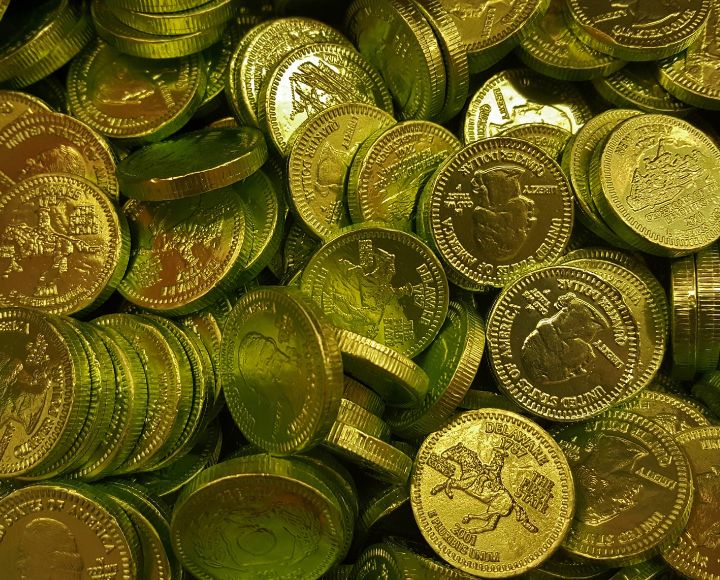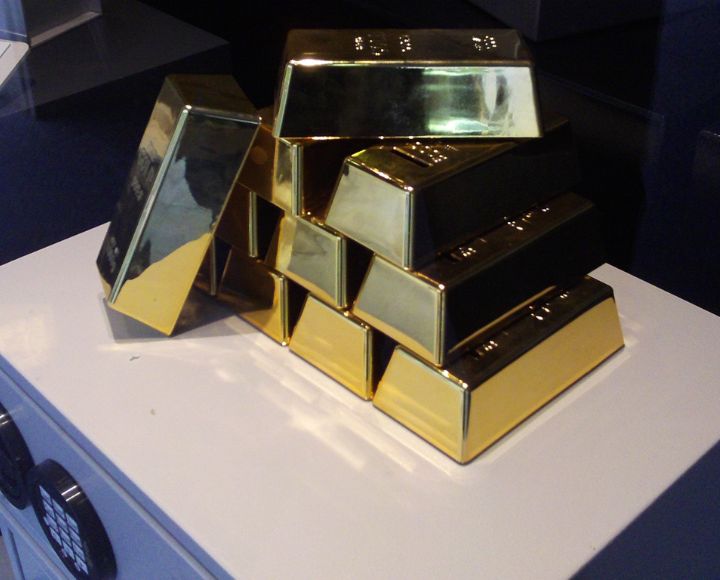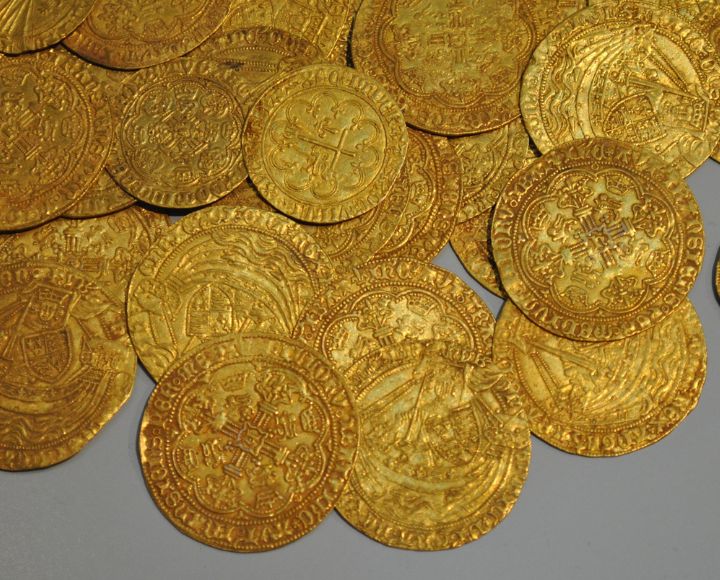The Timeless Allure of Gold
Gold, a symbol of wealth and power, has a history that stretches back thousands of years. Its allure is timeless, and for me, understanding its journey helps us appreciate its significance in our lives today. From the earliest civilizations, such as the Egyptians, who revered gold for its beauty and rarity, to modern societies, this precious metal has consistently captured human imagination.
In ancient times, gold was often used to craft objects of religious significance. The Egyptians created elaborate burial artifacts, while other cultures fashioned gold into coins for trade. These early uses established gold as a medium of exchange, intrinsic value, and a symbol of status. It played a crucial role in the economy of ancient empires, such as Rome and Persia, where it was utilized not only for decoration but also for commerce.
As I delve deeper into the history of gold, I find it fascinating how it has maintained its value through various historical epochs. The discovery of gold rushes in places like California and Australia in the 19th century led to frantic expeditions and the establishment of new towns. Each era has added layers to gold’s narrative, solidifying its place as a cornerstone of human civilization.
Why Gold Glitters:
Gold is not just visually striking; its inherent value is rooted in several unique properties. First and foremost, gold is remarkably resistant to tarnish and corrosion. Unlike silver or other metals, gold will not lose its luster over time, which is why it has been cherished for centuries. This quality ensures that gold items—be it jewelry, coins, or bars—retain their appeal and value.
Additionally, the rarity of gold contributes to its allure. While it is abundant enough to be mined and utilized, it remains relatively scarce in comparison to other metals. This scarcity drives demand and, in turn, enhances its value. I often think about how the limited supply of gold creates a sense of exclusivity, making it a coveted asset for individuals and investors alike.
Another compelling aspect of gold’s value is its role as a hedge against inflation. In times of economic uncertainty, people often turn to gold as a safe haven, seeking stability when currencies fluctuate. This behavior reinforces the perception of gold as a reliable store of value, further solidifying its status in both personal and global finance.
More Than Just Jewelry
In today’s economy, gold transcends its traditional role as a decorative item. It serves as a significant financial instrument, used by countries and individuals for wealth preservation. Central banks around the world hold gold reserves, recognizing it as a stable asset that can counterbalance currency fluctuations and economic unrest.
Moreover, gold is a preferred choice for investment portfolios. Many individuals, including myself, see gold as a way to diversify investments. It provides a safeguard against market volatility, allowing me to feel more secure during turbulent times. With options such as gold ETFs (Exchange-Traded Funds) or physical gold bullion, investors can easily access this precious asset.
It’s important to recognize that gold also plays a role in various industries. From electronics to aerospace, gold’s excellent conductivity and resistance to corrosion make it invaluable. This industrial demand adds another layer to gold’s economic significance, highlighting that its value extends far beyond mere adornment.
Properties That Make It Precious
The unique properties of gold are a key factor in its desirability and value. One of the most interesting aspects is its malleability. Gold can be hammered into thin sheets or drawn into wires without breaking. This property allows artisans to create intricate designs in jewelry and other decorative items, showcasing the metal’s versatility.
Additionally, gold’s density and weight contribute to its perception as a high-value material. When I hold a gold coin or piece of jewelry, I can feel its heft, which often evokes a sense of luxury. This weightiness not only signifies quality but also reinforces our understanding of gold as a tangible asset worthy of investment.
Gold’s hypoallergenic nature is another remarkable feature. For those who have sensitive skin, gold jewelry is often a safer choice. Unlike other metals that may cause allergic reactions, gold is gentle on the skin, thus ensuring its continued popularity in the jewelry market. This combination of physical properties underlines why gold has sustained its allure through generations.
Gold as an Investment:
When considering gold as an investment, it’s essential to weigh the pros and cons. On the positive side, gold is often viewed as a safe haven during economic downturns. Its historical performance during crises has shown that it can preserve wealth when other investments falter. This characteristic is particularly appealing for individuals like me who prioritize long-term financial security.
However, investing in gold is not without its drawbacks. One concern is the lack of passive income. Unlike stocks that may provide dividends or real estate that can generate rental income, gold does not yield any returns while it is held. This aspect can deter some investors who are seeking growth and cash flow from their investments.
Another consideration is the volatility of the gold market. While it is generally stable, prices can fluctuate based on various factors, including geopolitical tensions and changes in demand. As an investor, I recognize that timing the market can be challenging, and one must be prepared for potential price swings. Understanding these dynamics is crucial for making informed investment decisions.
Mining for Gold:
The journey of gold from the earth to our hands is a fascinating one, encompassing both ancient and modern mining techniques. Historically, gold was extracted using rudimentary methods, such as panning in rivers and digging shallow pits. These techniques required significant labor and time, reflecting the value placed on this precious metal even in ancient societies.
As I explore the evolution of gold mining, I am amazed by the advancements made over the centuries. The introduction of hydraulic mining in the 19th century revolutionized the industry, enabling miners to extract gold from larger areas more efficiently. Today, modern methods—including open-pit and underground mining—utilize sophisticated technology and machinery, allowing for greater yields and less manual labor.
However, it is important to recognize that modern gold mining comes with its own set of challenges. Environmental concerns have become increasingly prominent, leading to debates about sustainable practices. As we continue to seek gold, it is essential to balance the demand for this resource with the need to protect our planet.
Gold in Culture and Religion
Gold’s significance extends far beyond its economic value; it holds profound cultural and religious meaning across various societies. In many cultures, gold is viewed as a divine element. For instance, in Hinduism, gold is often associated with the goddess Lakshmi, symbolizing wealth and prosperity. This reverence illustrates how gold transcends material value, embodying deeper spiritual connections.
In addition to its religious symbolism, gold has historically represented power and authority. Royalty adorned themselves with gold crowns, jewelry, and artifacts to signify their status. I find it fascinating that even today, many nations incorporate gold into their national emblems and flags, further demonstrating its enduring significance.
Art and literature also reflect gold’s cultural importance. From ancient texts to modern cinema, gold often serves as a motif representing greed, ambition, and the human condition. This multifaceted representation illustrates how gold captivates our imagination, reinforcing its status as a symbol of humanity’s aspirations and desires.
The Environmental Impact of Gold Mining
While gold mining has historical significance and economic value, it also poses significant environmental challenges. Traditional mining methods can lead to deforestation, soil erosion, and water contamination. The extraction process often utilizes harmful chemicals, such as cyanide, which can have devastating effects on ecosystems.
As I consider the impact of gold mining on the environment, I am reminded of the importance of sustainability. The industry has been making efforts to adopt more responsible practices, such as implementing stricter regulations and utilizing eco-friendly technologies. It is crucial for consumers and investors to advocate for sustainable mining practices to minimize harm to our planet.
Moreover, initiatives aimed at reclaiming mined land and restoring ecosystems are becoming more common. By promoting responsible mining, we can ensure that future generations can enjoy the beauty and value of gold without compromising the environment.
Rose Gold, White Gold, and Other Alloys
In the world of precious metals, several alternatives to traditional yellow gold have emerged. Rose gold, a blend of yellow gold and copper, has gained immense popularity in recent years. Its warm, pinkish hue offers a unique aesthetic that appeals to many. I appreciate how rose gold’s distinctive color can add a touch of romance to jewelry designs.
White gold is another popular alternative, created by alloying yellow gold with metals like palladium or nickel. This combination gives it a silvery appearance, making it a favored choice for engagement rings and other fine jewelry. For those who prefer a more modern look, white gold serves as an elegant complement to diamonds and other gemstones.
Additionally, other alloys, such as green gold and black gold, have begun to gain traction in the jewelry market. These unique variations allow for greater creativity and personalization in design. As someone who loves to explore different styles, I find it exciting to see how these alternatives continue to evolve and captivate consumers.
The Future of Gold:
As I contemplate the future of gold, I am struck by the myriad of factors that will influence its trajectory. The rise of digital currencies presents both challenges and opportunities for gold. While some may view cryptocurrencies as a competitor to gold, I believe they can coexist, serving different purposes in our financial landscape.
Sustainability will be a significant trend shaping the gold industry moving forward. As consumers become more environmentally conscious, there will likely be increased demand for ethically sourced gold. Companies that prioritize responsible mining practices will gain a competitive edge in this evolving market.
Additionally, technological advancements may play a role in gold’s future. Innovations in mining techniques, recycling methods, and digital gold trading platforms could enhance accessibility and efficiency. As we embrace these changes, I remain optimistic about gold’s enduring allure and its ability to adapt to the modern world.
Conclusion: Why Gold Continues to Captivate Humanity
In conclusion, the timeless allure of gold is woven into the fabric of human history, culture, and economy. Its unique properties, historical significance, and multifaceted applications ensure that gold will remain a valuable asset for generations to come. As we navigate the complexities of our world, gold continues to captivate our hearts and minds, symbolizing wealth, beauty, and resilience.
Whether we wear it as jewelry, invest in it as a hedge against inflation, or appreciate its cultural significance, gold holds a special place in our lives. As we move forward, let us cherish this precious metal while advocating for responsible practices that protect our environment.
As you reflect on your relationship with gold, I encourage you to explore its many facets and consider how it fits into your own financial and personal narratives. Together, we can appreciate the value of this timeless metal while ensuring its legacy continues for future generations.
Call to Action
If you found this exploration of gold’s significance enlightening, I invite you to share your thoughts and experiences with gold. Whether it’s a cherished piece of jewelry or an investment strategy, your insights can contribute to our collective understanding of this captivating metal. Don’t hesitate to leave a comment or share this article with others who appreciate the timeless allure of gold!


